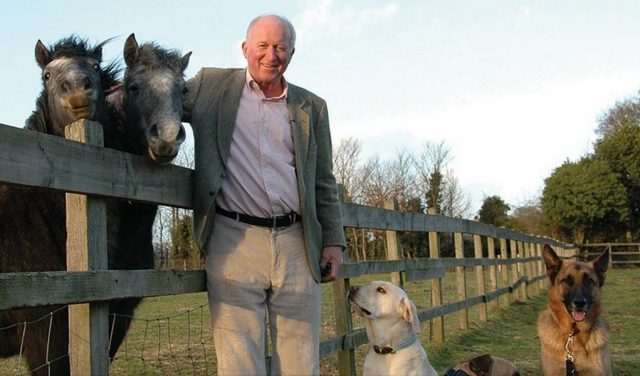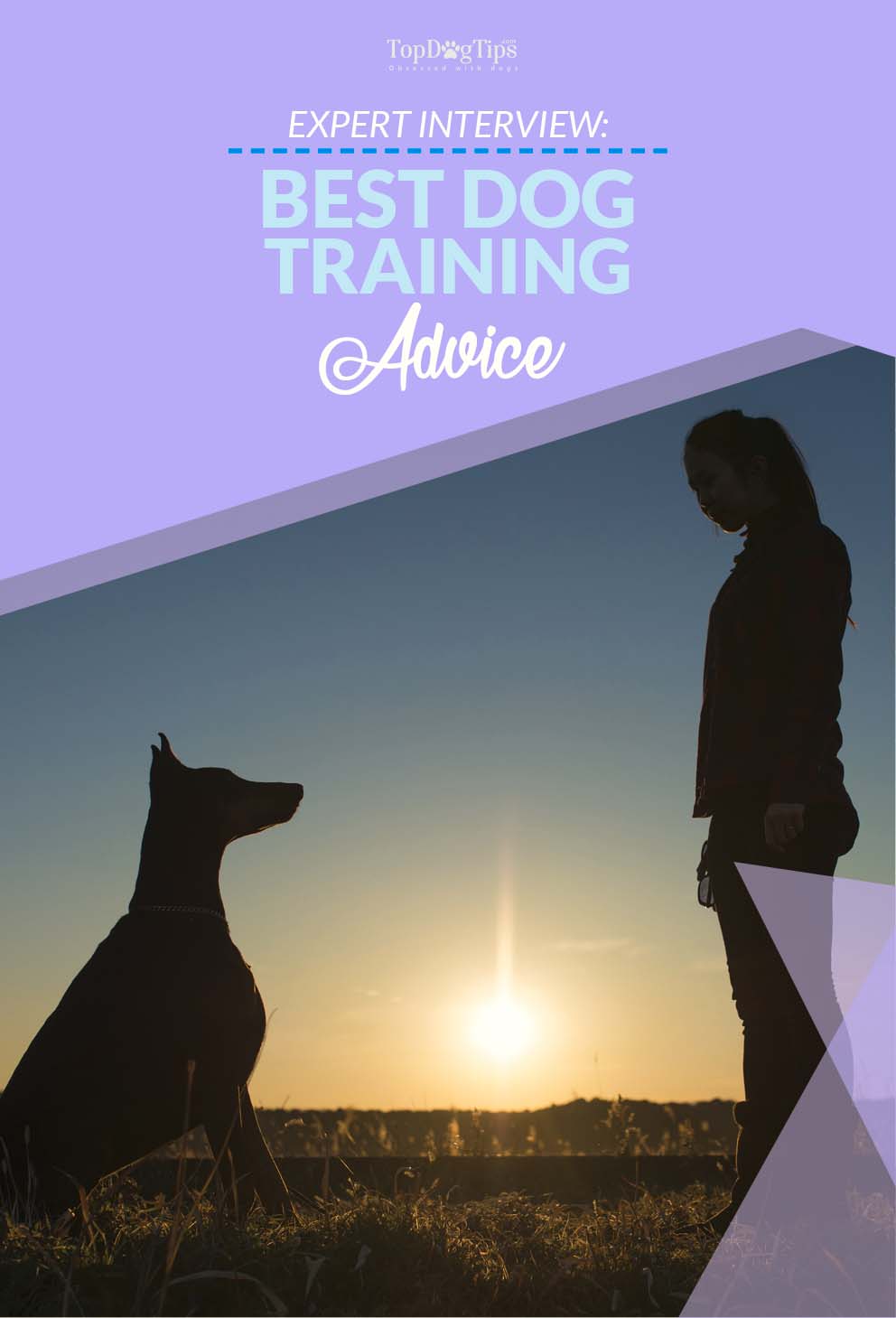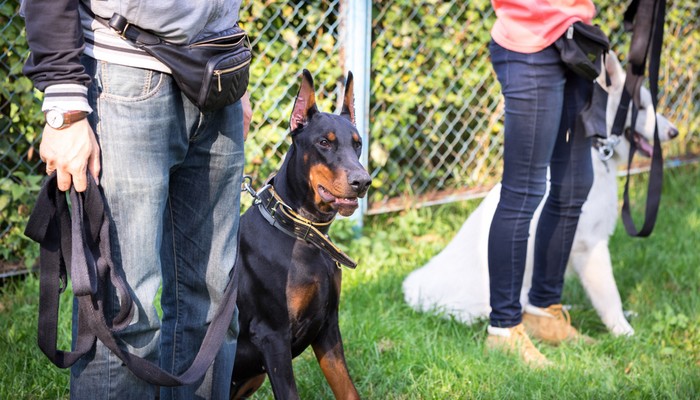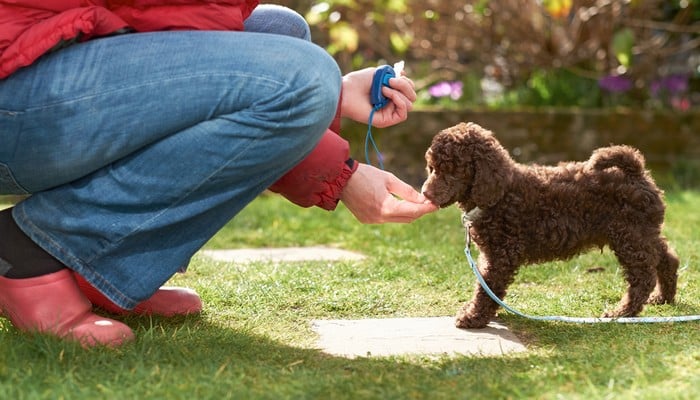
Table of Contents
What a treat! This week, I got to chat with world-renowned animal welfare advocate, educator, and author Dr. Roger Mugford. He has long been referred to as Britain's leading animal psychologist, and he's also a pioneer in behavioral therapy for animals.
 As you can imagine, having the chance to interview him was a great opportunity! I'm thankful to Dr. Mugford for taking the time out of his very busy schedule to share some dog training tips with me. Dr. Mugford's career has led him down some very interesting paths. He has led animal welfare initiatives all over the world, and he's even had the opportunity to train Queen Elizabeth II's pack of corgis!
As you can imagine, having the chance to interview him was a great opportunity! I'm thankful to Dr. Mugford for taking the time out of his very busy schedule to share some dog training tips with me. Dr. Mugford's career has led him down some very interesting paths. He has led animal welfare initiatives all over the world, and he's even had the opportunity to train Queen Elizabeth II's pack of corgis!
I asked him about this, and I'll tell you all about it later in this post.
Dog training is time-consuming, requires a lot of patience, and can prove to be frustrating at times. However, I promise that you will never regret taking the time to train your canine companion properly. You will reap the benefits of this training throughout the life of your dog, and it will make both your life and his life more enjoyable.
MUST READ: 10 Science-based Dog Training Tricks

Interview: Dog Training Tips From Dr. Roger Mugford
First, let me give you a bit of background on Dr. Mugford. In 1979 he founded The Animal Behavior Center (in the U.K.). This facility is dedicated to training dogs. To date, more than 80,000 pets and their families have benefited from the services provided by the center.
That same year, he also founded The Company of Animals brand. Through the brand, he's invented and developed a range of products that have revolutionized the way people train their pets.
The HALTI Head Collar® and Pet Corrector® auditory training tool are among these products. Both have proven so successful in dog training that competitors have often tried to replicate them. Of course, none will match the quality and effectiveness of the real thing.
Dr. Mugford is also a Dogs for the Disabled patron, Cancer & Bio-detection Dogs Trustee, and World Pet Association Lifetime Achievement Award recipient.
He is proud to maintain a link with his Devonshire farming heritage, as well. That's why he resides at Ruxbury Farm, where he personally cares for a herd of 70 purebred South Devon cattle, horses, llamas, 100 sheep, and, of course, his personal pack of dogs.
The Company of Animals
Hearing “The Company of Animals” may not mean much to you, but to experts in the field of animal health, it's one of the most well-known animal training and behavior centers in the world. It is based on a 100-acre working farm in Surrey, England.
Home to the Animal Behavior Center, which was also founded by Dr. Mugford, the center specializes in all levels of dog training. They also offer behavior consultations and veterinary referrals. As if that weren't enough, they also specialize in resolving legal issues involving pets, both in and out of court.
READ ALSO: 5 Best Dog Training Treats to Quickly Train Adult Dogs & Puppies
The Company of Animals is constantly researching and developing new products to help resolve a variety of pet-related behavior issues. Since there is also a constant flow of animals into the center, they also have a great base to test these products on.
The primary drive of the company has always been to develop products that help owners and their pets find an enriched life and to improve animal welfare. They firmly believe that their products must improve the well-being of pets, as well as help their owners.
For example, the HALTI Headcollar was designed to give owners effective control when walking their dogs without causing pain or damage to the dog's delicate throat area.
Why is proper training so important?
I've already told you that proper training will be time-consuming. It may also be frustrating at times. So, why is it so important? With minimal training, our dogs will eventually mature and just listen to us on their own, right? WRONG!
Dr. Mugford explained his concept of obedience to me, and it goes like this:
My concept of obedience is that the dog’s overall behavior and attitude are nicely integrated with your lifestyle, he/she fulfills your reasonable expectations and is compliant towards the usual signs of control – in addition to being happy, of course.
That said, obedience training is essential when it comes to nurturing a healthy human-animal relationship and raising a social pet. The basics – sit, stay, down, come, heel – help shape a good companion. They will also make your life much easier in the long run, trust me!
RELATED: Top 10 Best Dog Training Collars Safe for Dogs
There's a reason that our family puts the time and effort into properly training our dogs – because many years ago, I did not. We had a dog with no social skills, and he had no idea how to behave.
Our friends and family would cringe when we asked them to watch him while we were out of town, and I'm positive that we were the most disliked parents at the dog park.
“Consistency is the key to training a young dog, but as they mature, they become able to deal with changes to the rules of the game or even to the rules being reserved.” – Dr. Roger Mugford
You may think that training is just for formal occasions and that what happens in between doesn’t matter. Dr. Mugford explained to me that everything you do with your dog has an effect on his subsequent behavior.
In reality, every moment and activity gives you an opportunity to train your dog or for him to learn things that you would rather he not do.
INTERVIEW: Tips and Tricks for Family Dog Training
Dog training methods
There are many different methods that you can use to train your dog, but how do you know which is the best option? Dr. Mugford talked to me about some humane methods of training and when each is appropriate to use with your dog.
 Clicker Training
Clicker Training
This method relies upon delivering a clear, simple click sound at the precise moment a dog is seen to perform the ‘right’ action. He will learn to associate the click with the behavior.
Clickers are affordable and come in a variety of shapes and sizes, but the principle is always the same – they produce a sound that will not be confused with any other noise. As an alternative to a clicker, you could click with your tongue or fingers.
RELATED: The Best Dog Treats Review
Target Training and Use of Lures
Training your dog to follow the end of a stick or ‘wand’ with his nose will give you lots of extra training ‘power.’ Ultimately, your dog will be performing new and more demanding tasks.
The first stage is to have the dog approach and sniff a meat-smeared wine cork at the base of the wand, and then you click and give him a treat. Once you’ve repeated this several times, your dog will learn that he must follow the stick to obtain the payoff of a click and treat.
Dr. Mugford says that this technique is used by professional trainers who need dogs to perform really complex tasks, such as opening doors for wheelchair users and guiding the blind.
Hand Signals
Dogs easily learn to respond to hand signals, which can mean anything from ‘come’ or ‘fetch’ to ‘get in the car.’ In addition, dogs are more attentive to visual signals than to our voices, so it is sensible to combine the two.
 HALTI Training
HALTI Training
Head collars have given less able owners the ability to walk strong dogs. No harsh checking from the owner is required, and the dog soon learns that his walks will be most comfortable if they are conducted on a slack lead.
Dr. Mugford says that his view remains that head collars are best used as an interim training tool, not as a permanent solution.
Once you've properly leash-trained your pet, you should begin working with him using a standard lead.
At-home dog training
Most dog owners cannot afford to work with a professional dog trainer. Dr. Mugford has some advice for those of us who aren't able to pay a professional to train our pets. He says there are many high-quality training aids, such as books, DVDs, and online resources available.
You just need to be careful to choose reliable sources.
If you're looking for a great book to help you better understand the proper way to train your canine companion, I highly recommend Dr. Mugford's book The Perfect Dog.
It is a comprehensive dog owner's resource, as it breaks down training techniques, essential commands, and training challenges. This book also provides insight into dog behaviors, lifestyle needs, food selection, and much more.
Dr. Mugford also says that pet owners can look to multiple online resources for training tips and techniques. However, as previously noted, patience, consistency, and adaption are key when training your dog throughout its life.
Now, I promised I would tell you more about the Queen's corgis. This was my favorite part of the interview! I love seeing her pack of corgis. They are adorable, and I think it is great that someone with as much celebrity status as Queen Elizabeth II still makes time to enjoy her pets.
Dr. Mugford trained Queen Elizabeth II’s pack of corgis. In an interview that he gave Town and Country Magazine last year, he commented that:
I was mighty impressed with the Queen’s management of her dogs. The dogs are trained to be responsive to other members of the household, because so often the Queen and her husband The Duke of Edinburgh, are away from home travelling; so a housekeeper or butler has to stand in for the Royal Family. The dogs sleep in the home with the Royal Family, and they certainly are well fed! The context and content of their meals is very important to Her Majesty, who tailors what they are fed to their age, clinical needs, and so on. – Dr. Roger Mugford
I’d like to take this time to thank Dr. Roger Mugford for speaking with me about his amazing career and sharing his dog training tips. Make sure you check out The Company of Animals for more information about dog behavior and training.
You can also find all of their innovative products and some tips for dealing with the most common canine behavior issues like aggression, barking, and even destructive behavior.
READ NEXT: How To Train A Dog To Roll Over
WANT TO SHARE THIS?















